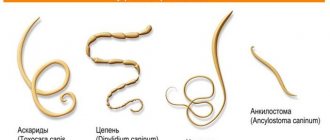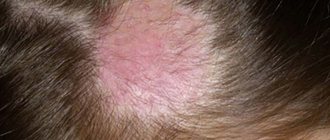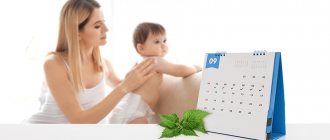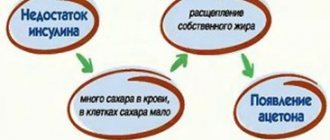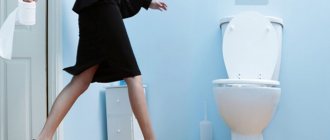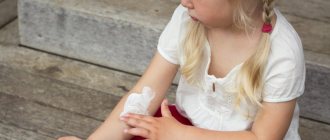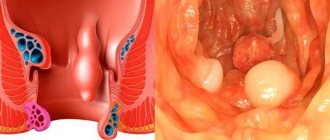There are about two hundred varieties of worms that can use the human body as a habitat. Before treating worms in a child, it is necessary to find out what type of worms he has and become familiar with control methods. A helminthic infestation can occur in a person at any age, but most often they affect the child’s body. This does not mean at all that parents are careless about the child’s appearance or home cleanliness. Worms appear in children not only when hygiene rules are not followed, but also through household items, toys, by airborne droplets, and also from pets. 80 percent of the total number of cases are among children. When a child learns about the world, he tastes everything. Therefore, mainly children of preschool and primary school age are susceptible to helminthiasis. In most cases, infection with worms is asymptomatic. Parents learn that their child has worms during routine examinations in educational institutions.
Types of worms in children
About seventy species of helminths affect the population of Russia. There is a division of worms into several classes:
- Nematodes (roundworms). They cause ascariasis, trichuriasis, enterobiasis, trichinosis. People become infected with these types of worms through poorly washed food, water, dirty dishes, insect bites, or by contact with an infected area of the ground. Nematode eggs rarely survive outside the host. Once in the body, they begin to develop intensively and larvae emerge from them. Roundworms can infect any organ in the human body. The incubation period for infection can last up to several weeks.
- Cestodes (tapeworms). They penetrate into humans by eating unwashed fruits and vegetables, poorly cooked fish, meat, unboiled water, and also through unwashed hands. Representatives of this class are echinococcus, bovine, porcine, dwarf tapeworm and others. Symptoms of infestation appear after 6–8 weeks.
- Trematodes (flatworms). These include pulmonary, blood, liver, intestinal flukes and others. They can be infected from pets. These helminths pose a particular danger to children's bodies, as they multiply at a rapid rate. The diseases they cause can be fatal. After entering the body, they make themselves felt within 2–4 weeks.
Flatworms
Often, parents can independently detect worms in children. In their stool they look like small white worms. If you cannot see them with the naked eye, you can determine the presence of worms by signs.
Need for other medications
In addition to the main anthelmintic therapy, it is necessary to rid the body of harmful, toxic substances that were released during the life and death of parasites. What to give the child in this case? For this purpose, enterosorbents are prescribed. Their reception begins one day after the start of the main course. More effective are the drugs Polysorb, Enterosgel, and activated carbon.
It makes sense to take antihistamines, which will help the body deal with toxins faster. Cetrin, Zyrtec, Loratadine are prescribed for treatment. They can be taken in the form of drops or syrups.
Be sure to prescribe enzyme preparations that will help the digestive organs digest and assimilate food during the period of treatment and recovery: Mezim, Festal, Creon.
After the main stage of treatment has been completed, restorative therapy is prescribed. It is recommended to give immunomodulators, drugs that improve intestinal microflora (Bifiform, Linex), vitamin and mineral complexes.
Any anti-worm medications for children, no matter how safe they may be, should be given only after consulting a doctor. Independent choice of medication can lead to the development of adverse reactions and deterioration of health.
https://youtu.be/mWbFFUGNBZY
Symptoms and consequences of helminthic infestation
The children's body is more often disturbed by representatives of nematodes (pinworms, roundworms). Among the main symptoms that should alert parents if they suspect ascariasis are the following:
- Problems with the gastrointestinal tract (constipation, diarrhea, abdominal pain, increased gas formation, lack of appetite).
- Increased size of the liver, spleen, lymph nodes.
- Rashes (urticaria, allergic dermatitis), pigmentation (yellowness) of the skin.
- Itching and redness of the anus.
- Neuropsychic disorders in the form of short temper, increased excitability, moodiness, restless sleep.
- Increased body temperature.
Enterobiasis (infection with pinworms) also causes a number of symptoms:
Restless sleep
- Restless sleep, grinding teeth, talking in your sleep.
- Severe itching and hyperemia in the anal ring.
- Weight loss or growth retardation with a normal diet.
- Fatigue, weakness, drowsiness.
- Headaches, dizziness.
- Nervous and neurological disorders (weak memory, absent-mindedness, tearfulness, irritability).
- Enuresis, vulvovaginitis in girls, which is due to the close location of the anus, vagina and urethra.
- Abdominal pain, intestinal disorders, vomiting, loss of appetite.
- Reduced level of hemoglobin in the blood, vitamin deficiency.
- Causeless dry cough.
- Decreased immunity.
Modern medicine offers a large selection of drugs for the treatment of helminthic infestations in children. Despite the fact that it is not difficult to get rid of worms with the help of medications, you should not delay treatment. In advanced cases, parasites are able to settle not only in the gastrointestinal tract, but also penetrate through the blood into the lungs, brain, liver and other organs, causing serious harm to the small organism. The consequences of helminthic infestation in children can be:
- development of allergic reactions up to bronchial asthma;
- decreased efficiency of the digestive system;
- immunodeficiency conditions in which the child often catches colds and develops chronic respiratory diseases (rhinitis, bronchitis, tracheitis, pneumonia);
- toxic damage to internal organs;
- retardation in mental and physical development.
It also happens that worms do not manifest themselves in any way. Then only laboratory tests will help diagnose the colonization of the body by parasites.
Enterobiasis (pinworms)
This helminthic infestation most often has a chronic course, characterized by intestinal disorders and itching in the perineal area. Enterobiasis most often affects children aged 3 to 7 years.
The causative agent is a nematode (pinworm) with a length of 2 to 12 mm. Sexually mature individuals parasitize the lower parts of the small intestine and the upper parts of the large intestine. Females filled with eggs (can contain from 5,000 to 15,000 eggs) descend with fecal matter into the rectum. They independently exit through the anus, crawl along the perianal area, can crawl onto the patient’s thighs, into the vagina in girls, and at the same time lay eggs.
Infection occurs when eggs enter the mouth through the hands while scratching itchy areas of the body, as well as from contaminated household items.
Due to the ease of infection, enterobiasis can last for several years.
The disease is highly contagious (highly contagious). The source of infection is a person suffering from enterobiasis.
Clinical manifestations of enterobiasis
- Severe anal itching. Most pronounced during sleep. May spread to the perianal area, genital area;
- Sleep disturbance, up to severe insomnia;
- The child is capricious, restless, excitable;
- Abdominal pain, loss of appetite, stool disorders;
- Detection of adult pinworms on the surface of feces and on the patient’s body;
- In some cases, this pathology is asymptomatic.
Diagnosis of helminthiases
If you suspect that a child has worms, you should contact an infectious disease specialist or parasitologist. The attending physician will give directions for the necessary tests. The main types of diagnostics for helminthiasis:
- stool analysis;
- blood test;
- scraping for worm eggs;
- Ultrasound of internal organs;
- X-ray;
- MRI.
In most cases, in order to determine a worm infection, it is enough to donate stool for three days. But this research method can only be used if there is nematode damage. In addition, stool analysis cannot always show the presence of worms in children.
Stool analysis
If eggs from representatives of other classes have entered the body, serological blood tests, parasitological analysis of other biological fluids (bile, sputum, intestinal mucus), ultrasound and MRI of organs may be required.
Why are parasitic worms dangerous for children's health?
The main danger of worms appearing in a child is that the worms take vitamins and microelements from his food, which ultimately deplete the tissues of the internal organs.
Further, the functioning of some of the internal organs of the infected baby may be disrupted, which negatively affects the functioning of his immune and nervous systems.
In addition, worms secrete various products of their vital activity in the baby’s body, which often leads to toxicosis or dysbacteriosis. Advanced helminthiasis in a child can lead to a number of serious complications.
https://youtu.be/-MqwwbmIHjo
This is, first of all, the risk of contracting urinary tract and abdominal infections, as well as significant weight loss.
Treatment of worms in children
There are medicinal and traditional methods of treating children for worms. When parents want to remove worms from their child on their own, without resorting to the help of a specialist, things can get even worse. This issue cannot be approached irresponsibly, that is, take any drug from the pharmacy and deworm your child. Medicines and traditional methods are selected by the attending physician depending on the type of worms, the characteristics of the body, the stage of infection, and the age of the patient. Not always, in order to drive away worms, anthelmintic drugs are enough. In some cases, complex treatment is prescribed, containing the following groups of drugs:
Suprastin
- Antihelminthic.
- Antihistamines. For allergic reactions, Zyrtec, Suprastin, Claritin and others can be prescribed.
- Detoxification. Injections of Calcium chloride, Glucose, or intake of vitamins C and B6 are prescribed in case of fever, headaches, joint and muscle pain, lethargy, and drowsiness.
- Sorbents. Used to remove toxic waste products of worms from the child's body.
- Glucocorticosteroids. Used (for example, Prednisolone, Dexamethasone) in severe cases when the course is complicated by vascular inflammation.
Drinking sorbents and antiallergic drugs should be started 5 days before starting to take the anthelmintic drug. Then during treatment and at least 5 days after it. Meals during this period should be light. You need to give your child more cereals, soups, and fermented milk products. As for the home environment, it is necessary to thoroughly clean the living space, wash all toys with detergent, shake out and clean all carpets, wash bed linen and curtains. Iron underwear on both sides. Children should wear panties with tight elastic bands at night to prevent the spread of worm eggs onto bedding and re-infection.
All family members will have to take anthelmintic medications. If you have a pet cat or dog, you must also worm them with special preparations for animals.
What helminthiases are typical for children 2-3 years old?
Among young children, round worms are the most common type. This class of parasites includes the following representatives:
- trichinella;
- pinworms;
- roundworms;
- whipworm
Infection with one of the representatives of roundworms gives characteristic symptoms. Depending on the type of pathogen, when examining a child, diagnoses such as ascariasis, enterobiasis, trichinosis, and trichocephalosis may be made.
In more rare cases, the following representatives of intestinal parasites become causative agents of helminth infections:
- pork and bovine tapeworm;
- dwarf tapeworm;
- wide tape;
- echinococcus.
In addition, the entire class of helminth infections is divided into groups of intestinal and extraintestinal parasites. The localization of worms is the lumen of the small and large intestines, liver tissue, myocardium, and muscle tissue.
Drug treatment
There are many means that can be used to treat a child for worms. It is worth taking into account that all of them have a toxic effect, due to which worms and larvae die. However, they have an adverse effect not only on worms, but also on the child’s body. Therefore, anthelmintic medication should be selected depending on its effect on the child. Popular medications used for baiting helminths in children are as follows:
Albendazole
Albendazole
It is used to treat children from 2 years of age. Before this age, with great caution and in cases where other anthelmintics are ineffective. The drug works well against nematodes and cystodes. Available in the form of capsules, tablets, suspensions. Helps with large and small invasions. It is better to take it with fatty foods for maximum effect. The dosage and course of treatment depend on the specific nature of the infection and the patient’s weight. Side effects include pain in the lower abdomen, nausea, heartburn, vomiting, stomatitis, urticaria, dizziness, and confusion. It should not be taken during pregnancy, lactation, or hypersensitivity to the components.
Vermox
Able to get rid of round and tapeworms and mixed infections. For children from 2 to 10 years of age, tablets are prescribed under the supervision of a doctor. Contraindications: ulcerative colitis, liver failure, allergic reactions. Concomitant use with other anthelmintic drugs is not recommended to avoid intoxication. The majority of the drug is taken once. After two days, the worms die and are excreted along with the feces. Vermox causes side effects: nausea, vomiting, liver problems; in case of overdose, anemia, hair loss, dizziness, leukopenia, rash. The drug is able to reduce the level of insulin requirements, which must be taken into account when treating children with diabetes.
Dekaris
It has a wide spectrum of action, but produces a strong intoxicating effect on the children's body. Contraindicated in children under 3 years of age, pregnant women, nursing mothers, and patients with liver and kidney failure. The tablets are used once. The dosage is calculated depending on the patient's weight.
Dekaris
Piperazine
A low-toxic drug in tablet form that can be used in children over 3 years of age and pregnant women. Affects only the class of nematodes in small infestations. Removes adult worms in feces. Contraindicated for kidney and liver diseases. The dosage depends on the age of the patient; the need for repeated courses is determined by the doctor. If the dosage is observed, there should be no side effects. Sometimes nausea, vomiting, dizziness, abdominal pain, and mood swings are observed.
Pirantel
A modern drug that can be given to children from 6 months to 3 years. Side effects and contraindications of the suspension correspond to Piperazine. The medicine is given to children once, if necessary repeated after 2-3 weeks. Sometimes parents do not want to give their children medications using homemade recipes against worms. But in most cases, folk remedies are used in conjunction with pharmaceuticals.
"Vermox"
In recent years, the number of effective deworming agents has decreased, which is due to the increase in drug resistance of pathogens and improper self-medication. The drug Vermox (mebendazole) is widely used, including in pediatric practice. Advantages of the drug for eliminating signs of worms in children 2-3 years old and eliminating the disease in general:
- High therapeutic activity against the pathogen.
- A fairly wide range of anthelmintic activity (enterobiasis, trichuriasis, ascariasis, taeniasis and many other pathogens).
- Low toxicity of the drug.
- The mechanism of action, which manifests itself in eliminating the ability of helminths to absorb glucose, as the main source of their energy and nutrition.
- High activity against helminth eggs (ovicidal activity).
Disadvantages of the drug:
- treatment of children from the age of 2 years (by the decision of a specialist and the presence of indications, use in children less than 2 years old is possible);
- allergic reactions (here it is necessary to differentiate whether this is a reaction to the drug itself and its components, or to toxic substances released after the death of a huge number of helminths).
Important: if a pathogen is isolated from a child’s stool, then each family member (including animals, if any) must be treated.
Folk recipes
It happens that traditional therapy completely replaces drug treatment. It is worth noting that such treatment is less effective, since home remedies can only get rid of adult individuals. In this case, the eggs and larvae of worms remain in the intestines. This can lead to re-infestation by worms. The most famous folk recipes:
Vegetable oils
- Vegetable oils. When treating helminthiasis in children, preference is given to flaxseed or hemp oil. You can moisten a special swab with it and wipe the child’s anus. Oils are also given to children internally in pure form, one teaspoon three times a day, or with other food products (porridge, bread).
- Cucurbitin, contained in raw pumpkin seeds, helps cure a child of worms. Depending on the age of the child, the daily dosage of this healthy treat ranges from 120 to 300 grams. Pumpkin seed milk has a good effect on the intestines infected with helminths. To prepare it, you need to grind 200 grams of seeds and pour 500 ml of boiling water. Leave for 15 minutes. Then drain the resulting liquid and give it to the child during the day before meals.
- Children with worms are given milk and garlic to drink. To prepare the drink correctly, you need to do this: put a couple of chopped garlic cloves in a 250 ml glass of milk and boil for ten minutes. Give your child a quarter glass twice a day for four days. In addition, you can make microenemas of 100 ml from this drink for five days.
- Giving your child freshly squeezed carrot and beet juice can not only get rid of worms, but also strengthen the immune system. Since worms are capable of sucking out useful substances and microelements, it is simply necessary to replenish their supply in the child’s body with the help of rosehip decoction and fresh fruits.
- Onion tincture is a good treatment for worms. A small chopped onion should be poured with boiling water, cooled, and kept in the refrigerator for 12 hours. After this, you can divide it into three parts and give it to children before meals. The course of treatment is five days.
- It is known that pomegranate peel is rich in tannins, which kill worms. To prepare the infusion, you need to pour ½ cup of boiling water over the peel of two fruits and give the child small portions of ½ teaspoon three times a day.
- Cleansing the intestines using therapeutic enemas will help remove worms from a child. The dosage of a soda enema is half 1 teaspoon per glass of water. It’s good if the child can hold the solution for 15–20 minutes and then go to the toilet. After worming, you should rinse the intestines again with water. Enemas can be done with infusions of medicinal herbs, provided that the child is not allergic to them.
- Medicinal fruits and vegetables. Sweet pepper and sorrel have an anthelmintic effect. Carrots, beets, cabbage, and lettuce have a high fiber content. These vegetables activate intestinal motility and remove toxins. They have been used to treat worms for a long time. Delicious watermelons and pineapples have a laxative and diuretic effect, which is useful for poisoning the body with toxins.
Onion tincture
Like any type of treatment, traditional methods have their pros and cons. The positive thing, of course, is that folk remedies do not involve large financial costs.
Many herbs, juices, and infusions can strengthen a child’s immunity without causing toxic effects. On the other hand, some recipes taste unpleasant and the child may refuse them. In addition, for the desired effect, a long course of treatment must be taken, which can be difficult for a child. And, of course, you shouldn’t expect 100% results from folk recipes. It is impossible to completely expel worms without medication.
"Pirantel"
The drug “Pyrantel” is popular among pediatricians for eliminating the disease and symptoms of worms in a 3-year-old child. It blocks the nervous system of helminths and promotes their removal from the body. Advantages of this medicine:
- convenient release form for children (in the form of a suspension);
- pleasant taste (flavor of fruit, which does not cause negative emotions in the child);
- affordable price category of the drug.
"Pyrantel" in suspension can be used in children from 6 months of age to eliminate the disease and symptoms of worms in a 3-year-old child.
For the treatment of enterobiasis: calculation for children: 10 mg/kg once a day. Treatment of ascariasis: 5 mg/kg once daily.
Alternative regimens for etiotropic treatment of helminthiasis may include the following drugs: Albendazole (children over 2 years old), Levamisole, Ivermectin (children over 5 years old). Symptomatic therapy includes restoration of normal intestinal microflora, for this purpose the following drugs are used: Bifikol, Bifidumbacterin, Linex, Acipol and others. A month after the end of the course of treatment, it is necessary to determine whether it was effective or not. To do this, a laboratory test is performed on a stool sample. If helminth eggs are found in the feces, this is an indication for a second course of treatment. But if nothing is found in the stool, then samples are taken again at intervals of 2 days and the result is assessed again. If it is negative, then treatment is stopped. Children should undergo preventive deworming twice a year.
Prevention of worm infection
In order to protect your children from parasite invasion, you must follow some rules:
- teach your child to regularly wash their hands with soap after visiting the toilet, going outside, and before eating;
- prohibit putting dirty objects in your mouth, biting your nails, or licking your fingers;
- keep fingernails clean and trimmed;
- regularly, at least twice a day (morning and evening), carry out hygiene of the external genital organs and anal area, and then change underwear;
- Iron underwear on both sides;
- wash vegetables and fruits, subject meat and fish to thorough heat treatment;
- if there are insects in the house (cockroaches, flies, mosquitoes) - get rid of them;
- remove worms from pets.
Treatment of helminthiasis in children in modern medicine does not cause great difficulties. Parents are offered a large number of pharmaceuticals and folk remedies to choose from. However, it is necessary to take all measures to prevent children from becoming infected with parasites, because worms that remain in the body for a long time can harm the health of children.
Prevention of ascariasis and enterobiasis
Parents naturally want to protect their child from all kinds of parasites. Therefore, a number of preventive measures should be taken. Or, after the child has been cured of them, prevent a new infection.
Measures against helminth infection
◑ To avoid infection with these parasites, it is advisable to regularly screen children in institutions. In addition to preventive examinations of children, it is necessary to examine adults. Mainly those who work collecting vegetables and selling them.
◑ Before using wastewater for irrigating vegetables and fruits, it is advisable to treat the water and analyze its composition.
◑ The child must be taught good hygiene. Avoid eating while walking and do not touch your mouth with dirty hands. It’s good if, in addition to washing your hands with the product, you disinfect your palms and fingers with chlorhexidine or special bactericidal sprays.
◑ After contact with animals, even if they are domestic animals, you need to thoroughly wash your hands.
◑ Treat the surfaces of tables, furniture, door handles, and toys with a disinfectant.
◑ Trim your child's nails short and apply iodine or alcohol under the nails.
◑ Wear thick pajamas at night. This will minimize scratching of the anus.
◑ Change your child's underwear and bedding frequently.
